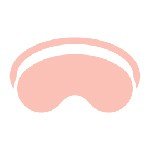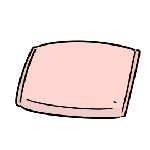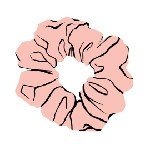When the CDC first recommended that we start wearing face coverings to help slow the spread of COVID-19, few people realized what an essential part of our getup they would soon become. And while many of us have met the moment with a resilient optimism and invested in a mask that marries form and function—be it Susan Alexandra’s beaded take or Batsheva’s upcycled floral cottons—even the chicest offerings can’t combat maskne, or return to us the joy of a swipe of lipstick, which is why our skin-care and makeup routines now require some recalibrating. With this in mind, Vogue has turned to the pros to sound off on the changes that we should all be implementing above the neck, from swapping out thick creams with a serum-based moisturizer to embracing a newfound need for creative expression at eye level. Below, their top tips.
Streamline Your Skin-Care Regimen
“These times call for a pared-down routine,” says Brooklyn Face and Eye’s Dr. Chaneve Jeanniton. “Steer clear of harsh scrubs, heavy-duty exfoliants, and thick creams, which have a propensity to exacerbate congestion,” she adds. Instead, reach for just a gentle cleanser, hydrating toner, light serum or gel moisturizer, and sunscreen, and prioritize skin-soothing ingredients, such as hyaluronic acid, aloe, and niacinamide. Be sure to wait five minutes after application before putting on your mask, in order to allow the products to absorb into the skin, she notes.
Cleanse and Assess Your Complexion
“A little TLC will go a long way in caring for our skin amidst our need to wear masks,” says Dr. Jeanniton, who notes the importance of gently cleansing the skin in order to remove trapped sweat and debris after taking off a mask. “What follows [should be] a bit more bespoke,” she adds, noting that targeted application of benzoyl peroxide to troubled areas can help banish breakouts, while ice cubes or frozen peas applied directly to the skin for a few minutes at a time can ease any mask-related redness or swelling.
Wash Your Mask Regularly
It’s essential to cleanse not only your complexion regularly but also your face covering, explains Dr. Jeanniton. “Frequent laundering is key, so you can easily switch out to a clean mask rather than reintroduce dirt, oil, and debris from a soiled mask to your skin surface,” she says, recommending using hot water and a fragrance-free detergent. (“Fragrance within the fabric can be an irritant and an unnecessary variable to deal with,” she warns.) Additionally, stock up on masks made from soft fabrics, which will ease friction—an issue that “can create micro-tears [in the skin] that allow for easier entry of bacteria and dirt” and ultimately cause inflammation and acne formation.
Skip the Foundation, If Possible
Dr. Jeanniton is quick to caution against applying makeup under your mask, which can clog pores and lead to breakouts, but, as makeup artist Cyndle Komarovski suggests, “If you must [wear foundation], stick with lightweight formulas, like Chanel’s Les Beiges Water-Fresh Tint, and apply only on exposed areas.” After, make sure to blot the skin in order to “gently remove that top layer that would rub off on your mask,” she notes, adding that Tatcha’s Blotting Papers are a mainstay in her bag—as is a mask-friendly matte lip balm, which will moisturize the mouth without leaving a sticky finish.
Get Expressive With Your Eyes
With all focus now on the upper half of the face, Komarovski recommends paying special attention to the eye level with groomed brows, amped-up lashes, and bold strokes. “Now that we are unable to see one another’s expressions or smiles, it’s the perfect time to work on your creative expression and have fun,” she says. Plus, she adds, it may just have a feel-good effect: “Whether you are wearing colored liners or playing around with crystals, makeup is the perfect mood booster.”







